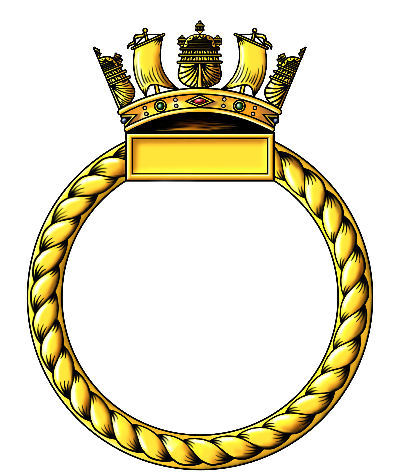R.N. Auxiliary Hospital

No badge issued for this establishment
Location
Livingstone College and St. George's Hospital, Bombay, India
Commanding Officers
Surgeon Captain (G. C. Vickery, OBE, MB, BCh (ret)
Surgeon Captain R.N.V.R. T. W. Drummond LRCP & S
Related items
None
Reminiscences
None
Gallery
None
R.N.A.H. Bombay
Establishment of a Naval Auxiliary Hospital
On April 24th 1944 Surgeon Captain G. C. Vickery, OBE, MB, BCh was appointed as Staff Medical Officer to Senior Officer, Royal Naval Establishments, India, and as Medical Officer-in-Charge of the Royal Naval Auxiliary Hospital, Bombay. At the time of his arrival in Bombay, on June 1, 1944, the Livingstone High School, Bombay, was in process of being converted into a Naval Auxiliary Hospital of 300 beds; the building had been handed over by the Governor of Bombay on October 4, 1943, at a monthly rental of 7,849 Rupees and additional outbuildings had been erected but not equipped, electrification had not been carried out, and a water supply had not yet been provided.
While this work was carried out accommodation for naval personnel was provided in St. George's Hospital, Bombay, 100 beds on the upper floor were set aside for naval use. Medical and surgical patients were treated by naval medical officers lent to St. George's Hospital, medical records were kept by two naval sick berth ratings, while nursing and catering were carried out by the civil staff of the hospital.
The Royal Naval Auxiliary Hospital, Bombay, was officially opened by Lady Louis Mountbatten on January 26, 1945, in the presence of His Excellency the Governor of Bombay, and Lady Colville. The Senior Officer, Royal Naval Establishments, India, was also present as were many other distinguished British and Indian residents. The hospital was originally planned to open in April 1944 when Surgeon Captain G. C. Vickery was appointed but this could not have been achieve because of slow conversion progress and the acute shortage of nursing staff.
Hospital staffing consisted of one surgeon captain and six medical officers, one accountant officer, one warrant wardmaster, one Matron and ten nursing sisters, 37 V.A.D.s (Voluntary Aid Detachment nurses)., 29 sick berth ratings an 16 civil staff. On part of this complement had arrived by the time the hospital opened.
Although open to receive patients at the end of January not all construction was complete at his time, the most important of these delayed works was the lack of an air-conditioning plant for the operating theatre. This meant that the bulk of theatre work still had to be carried out at St. George's Hospital. Staff accommodation was a problem which was solved only after many months of difficulty. Additionally the system of victualling, put out to local contract, was not altogether satisfactory so eventually efforts were made eventually to put a general mess system into force; this too encountered problems with strafing, the necessary cooks, catering and victualling staff were in short supply in the area.
The shortage of nursing staff during the first few months of the hospital's existence was quite dire, that the numbers in each category were insufficient to make provision for leave or sickness; at this time dengue fever was endemic in the district in which the hospital was situated. This disease exacted a high toll among the staff, and a large number of cases occurred among patients who were infected while under treatment in the hospital for some other disease. The shortage were partly eased by diverting a number of the medical staff intended ultimately for the Combined Military Hospital, Emakulam, Cochin. The complete medical staff for Bombay arrived by March 30th 1945.
Rundown to closure
In November 1945 a change took place of Medical Officers-in-Charge, Surgeon R.N.V.R. Captain T. W. Drummond LRCP & S assumed command, and, with one exception, all medical officers on the staff of the hospital were discharged to the United Kingdom for demobilisation. Work was continued with a new team, all fairly junior in rank.
R.N. Auxiliary Hospital, Bombay functioned for several months after the end of the war with Japan. By the time it closed it had treated 3,230 Service patients , in general, medical cases predominated, and the nursing staff gained good experience in the nursing of dysentery, malaria and the usual tropical fevers. The nursing staff also assisted in the preliminary organisation involved in the opening of the first Royal Indian Naval Hospital to be established in India, and the Royal Indian Naval nursing staff welcomed the guidance of their more experienced Royal Naval nursing colleagues.
The rundown to closure was nearing completion by early February 1946, its work was taken over by St. George's Hospital and the hospital site was transferred back to Livingstone College on February 15th. St. George's Hospital cared for naval patients until March 15th1946, after which date the peace-time system was reverted to whereby hospital accommodation for naval personnel was provided by the British Military Hospital, Colaba.
Last modified: 15 September 2023
Primary information sources
Additional sources:
(1954) Surgeon Commander J. L. S. COULTER, D.S.C., R.N., ‘THE ROYAL NAVAL MEDICAL SERVICE’ London, Her Majesty's Stationery Office - Volume 1'Administraion'
Comments (0)